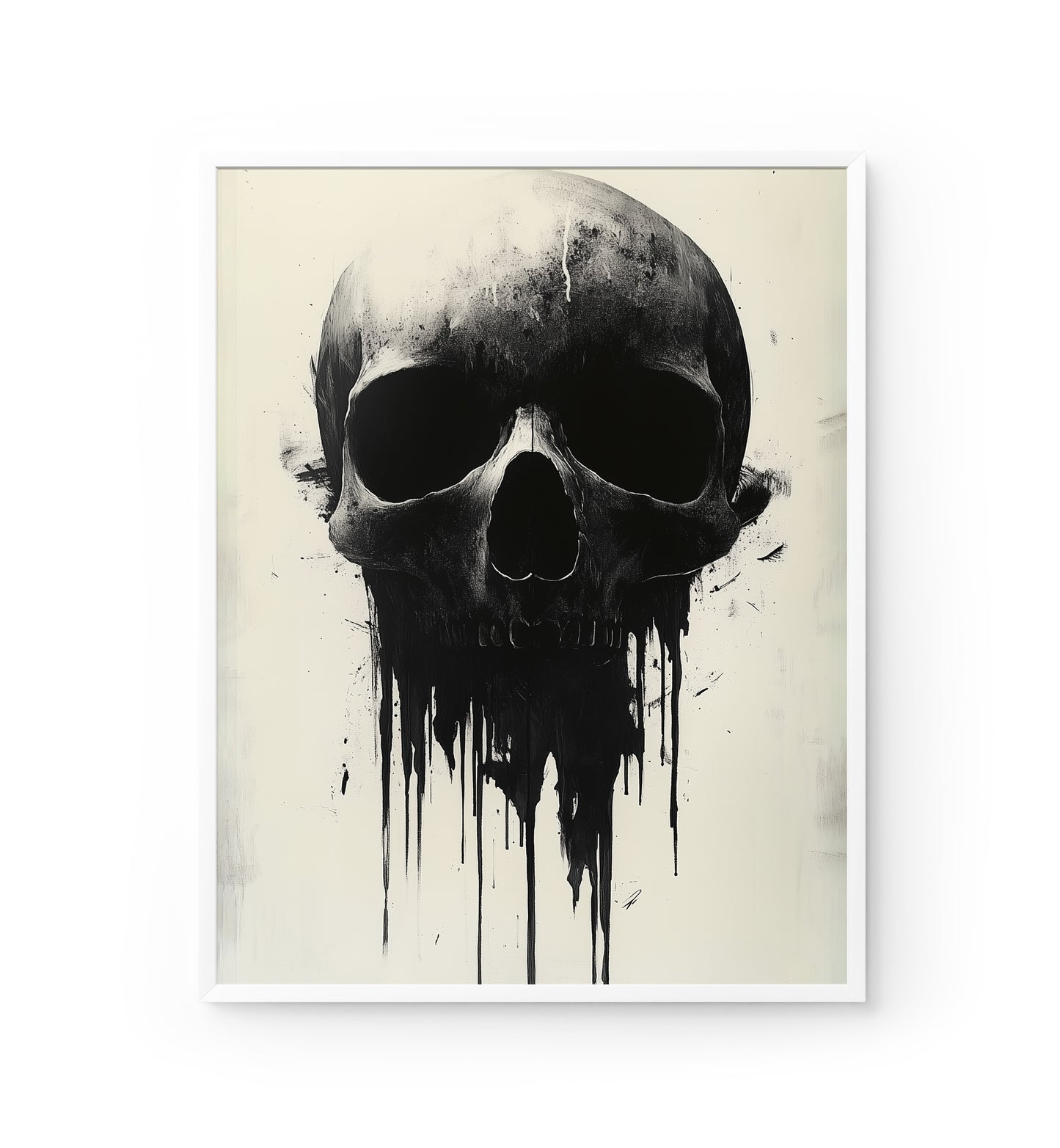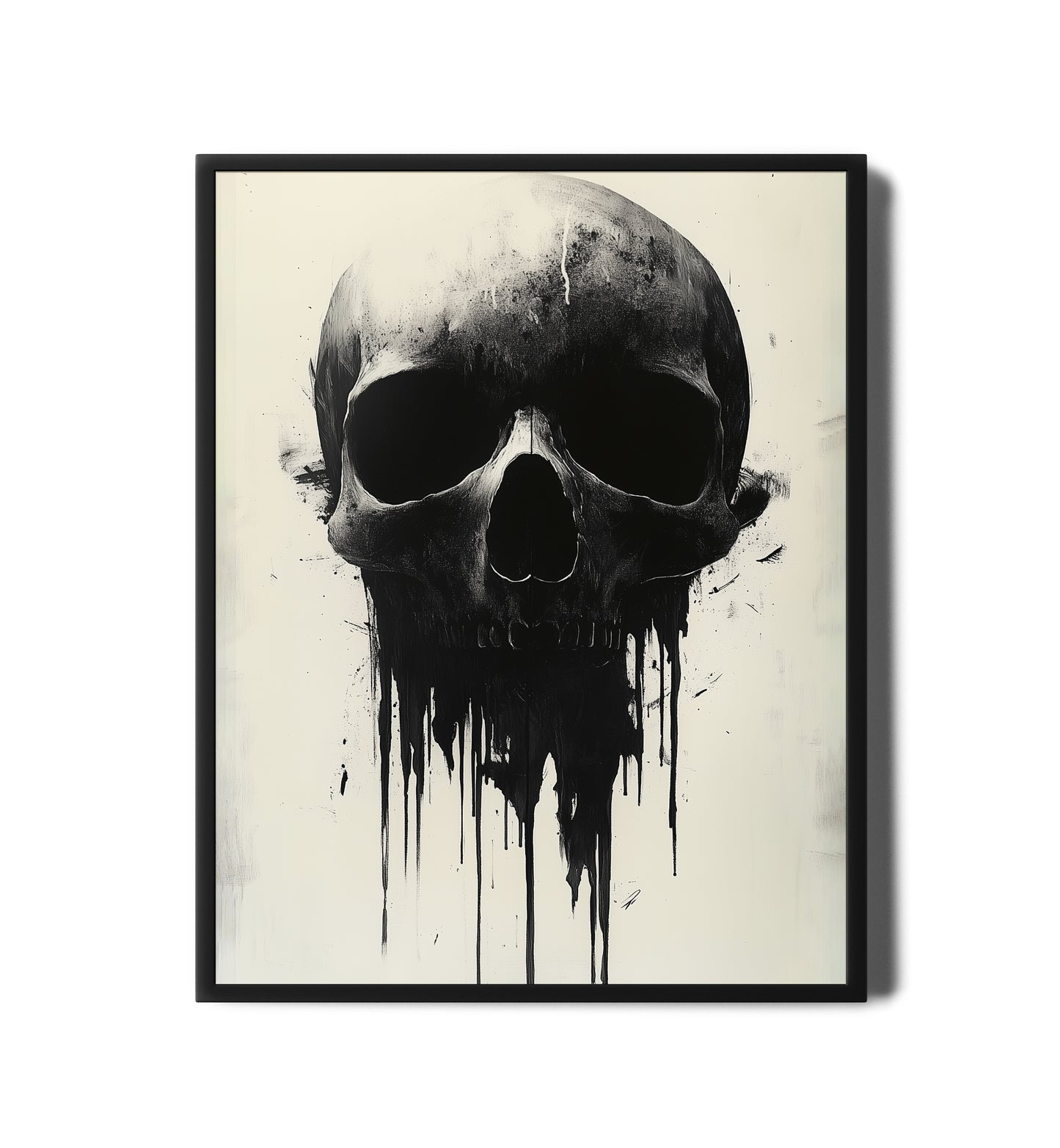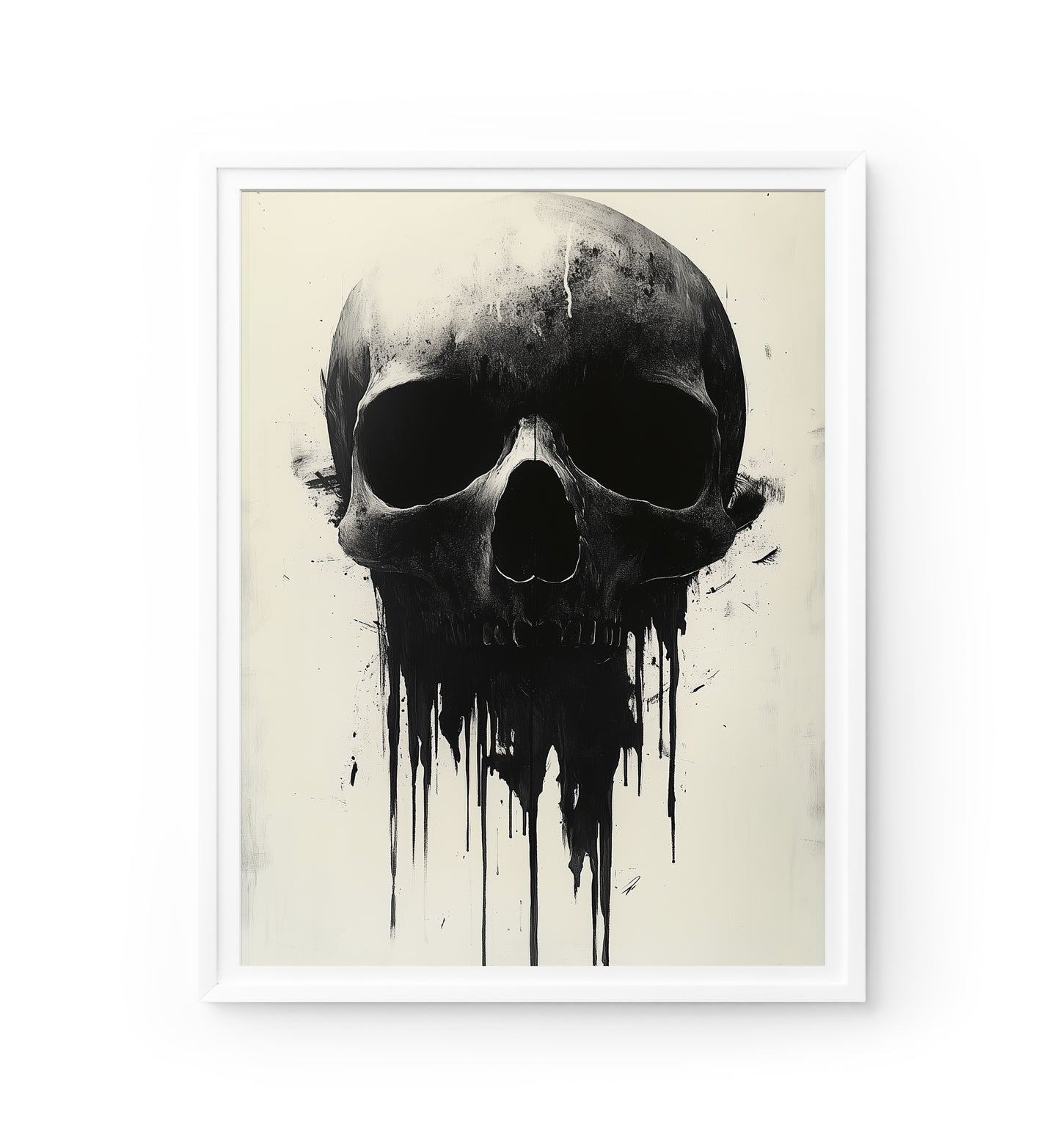THE DYING ECHO
THE DYING ECHO
Couldn't load pickup availability
A single skull stands as the central figure in a dark and abandoned landscape. The once-immaculate surface, now marred with cracks and scratches, reflects the silent passage of time. The skull itself seems almost defiant—its hollow eyes staring into the abyss, untouched by the decay that surrounds it. But what draws the eye most are the black streaks that drip from its edges, like ink bleeding from the very essence of life itself. The stark contrast between the bright white bone and the dark fluid stains speaks of life slipping into oblivion, and yet the skull remains—unchanged, eternal, and filled with a quiet power.
The dark liquid, pooling at the base and flowing like a slow river of time, represents the inevitability of death, the slow erosion of everything that once thrived. The background, smeared and streaked with shadows and remnants of the past, offers no escape from the forces that govern the skull. The skull’s face, though empty and decayed, exudes an air of stillness, as if it has accepted its fate and the fate of all things. It is no longer a symbol of fear, but one of quiet resignation.
The Quiet Descent tells the story of the slow and inevitable fall of all things, of life that eventually fades into nothingness, and of the strength found in embracing that truth. The skull is both the beginning and the end, a marker of a journey that is both personal and universal. Its unyielding form in the face of decay is a reminder that while everything may fall apart, some things endure—unseen, unnoticed, and yet always there, silently watching as the world shifts and crumbles. It is the story of what remains when all is lost—an unspoken testament to the quiet descent of time itself.
Share





